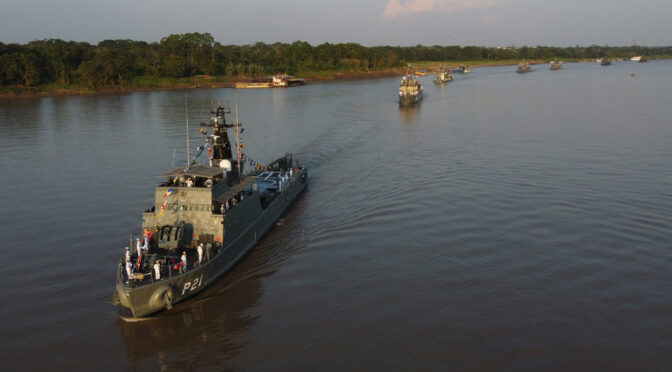By Paul Viscovich, CDR/USN (Ret.)
“Admiral, here’s your copy of the Midday Position Report.”
“Thank you, Mr. Snyder.” RADM Gail Easterling glanced at the 3-1/2 by 5-inch chit recording the flagship’s 1200 latitude, longitude, and a few other datapoints critical to safe navigation.
“This position is partly based on Celestial. With all this cloud cover, when did the Nav Team manage to find a heavenly body?”
“Shortly after sunrise ma’am. There was a break in the weather just long enough for the Quartermaster to shoot a compass bearing and lower limb of the sun.”
“That’s not great but it’ll have to do. I’ll be happier if it clears up enough for them to shoot a couple of sun lines for a running fix. Not as accurate as GPS but better than this.”
“At least when they destroyed our satellites the enemy lost their own GPS capability.”
“True but remember, they don’t have to cross an ocean without it.”
The admiral slipped the Position Report onto a clipboard already straining to hold all the information she judged critical to her grasp of the “big picture” and propped it up on the angle iron in front of her bridge chair.
“By your leave ma’am?”
“Of course. Oh, wait! Tell me, have you ever had to rely on just celestial and dead reckoning for an ocean transit?”
“No Admiral, at least not entirely. When I was an ensign on Canopus, we had this competition among the junior officers. The XO gave us the QM’s daily observations but we had to figure the sight reductions, plot the fixes, and dead reckon from there. The object was to see who could come closest to our actual position when the ship reached the entrance to the Chesapeake.”
“How did that turn out?”
“Well ma’am, I didn’t win. Some did better than others. But I think the lesson was supposed to be the importance of keeping our celestial skills sharp and not getting dependent on GPS. One of the XO’s favorite sayings was, ‘don’t get mesmerized by technology.’”
“As we’re learning now. Speaking of technology, what’s this evening’s test of that experimental drone swarm?”
“Shall I see if Professor Braun is available to brief you, ma’am?”
When Professor Eric Braun appeared on the bridge a short time later, one would hardly guess from his self-confident stride that he’d acquired his sea legs just a few days before. Admiral Easterling swiveled her bridge chair to face him.
“Good afternoon, Professor! I hope I’m not interrupting your lunch.”
“Howdy, Admiral. No, I ate early. I was down in our work spaces. I imagine you’re curious about how this morning’s search and acquisition exercise went.”
She nodded and picked up her tablet, clicking on the file named, “No-see’ems.”
“I think we have a partial fix to the problem imposed by the lack of precision in knowing our starting position at launch. By expanding the search radius of our scouting units out to two standard deviations off the programmed course, we improve our chances of finding the target without sacrificing too much in the way of spreading the scouts too thin.”
“How long did that delay the engagement?”
“Not quite a quarter of an hour, the time it took the main body of the swarm to change course and mass on the target’s actual location.”
She scrolled through the Schedule of Events annex in the file. “I see in tonight’s exercise, the surface target drone will try to defend itself against the swarm. What countermeasures will it use?”
“We’ve found that concussive airbursts are most effective at disabling our nano-bots. We’re using that 3-inch/50 mount on the target USV to fire mechanically fuzed anti-aircraft rounds in a set pattern along the avenue of attack. Even if the air bursts don’t get a hard kill, the concussion scrambles enough of the sensors and organic AI coding of any nearby drones to render them ineffective.”
“Can the swarm evade this danger?”
“Good question ma’am. We’ll be testing that capability too. We coded the AI learning algorithms to recognize the sudden loss of communications with the disabled units as being associated with the concussive blasts.”
“So the surviving units will avoid them?”
“Better than that. We hope to demonstrate that our shipboard central processor can vector the gunfire back to the target, then re-orient the swarm’s angles of attack away from its effective firing arcs.”
“Where’s the best place for me to watch this in real time?”
“From your chair in CIC. In fact, I’ll be there too. Barring any glitches, we’ll launch the swarm between 1930 and 1940. Engagement can occur any time after 2000, depending on the range to the target and how long the swarm takes in finding it.”
“I’ll see you there.”
On a Wasp-class amphibious assault ship, the Combat Information Center (CIC) is located two levels above the main deck, immediately aft of Officers’ Country. To a visitor, it’s a twilight world of borderline chaos, with its crackling overhead voice radio speakers and constant hum of watchstanders passing tactical information between themselves and the decision-makers.
Admiral Easterling picked her way through the maze of radar repeaters, Navy Tactical Data System (NTDS) consoles, and plotting tables toward her chair at the evaluator’s station. Prof. Braun was nearby on a sound-powered phone, chatting with the Meteorology Office. He nodded several times and his brow furrowed with concern. He and the Tactical Action Officer conferred briefly, then approached the admiral.
“What’ve you got for me?”
“A possible problem, ma’am” replied the TAO. “The weather-guessers are predicting scattered showers in the next couple of hours. We’ve already got one on radar. Prof. Braun says the swarm can’t launch or operate in the rain. He’ll fill you in.”
“Evenin’ Admiral. To retain flexibility and minimize early detection, the nano-bots proceed independently to the target before combining into macroforms. But since each ‘bot is so tiny, one rain drop can destroy it.”
“Is it raining now?”
“No, but if a squall pops up on their way to the target, it could wipe them all out.”
“Can’t they avoid it?”
“Negative. The AI’s not that smart yet. We’d have to use manual override to vector them around the obstacle. I recommend we scrub this evening’s event rather than risk putting the swarm at risk.”
“Hmm. We’re running out of time to finish testing the system before we can expect contact with the enemy. What’s the probability of precipitation?”
“Between 35 and 40 percent over the next two hours.”
“How far away can our radar pick up a shower?”
“Twenty miles max, Admiral. Beyond that, they’re flying blind.”
“Not necessarily.”
“You have an idea, TAO?”
“We could launch the ‘Ready Ten’ helicopter to run recon ahead of the swarm.”
“What do you think, Professor?”
He shrugged. “It may work but it’s still risky.”
“Then let’s proceed. In the real world, launching the helo would compromise the element of surprise, but I think the data and lessons we’ll learn are worth trying this now.”
“Bridge, Combat. Inform the Captain, Admiral Easterling directs launching the Ready Ten.”
Days passed. The balance between nautical miles sailed and those remaining tipped steadily toward the former. Crossing the International Dateline was marked only as unusual event where the clocks were set back one hour, as the calendar skipped ahead by one day. Tough luck if this fell on your birthday.
RADM Easterling’s amphibious task group was close to its rendezvous with the USS Ranger carrier strike group and enemy contact could occur at any time. The task group’s passage had not gone unobserved. Several brief but unmistakable radar contacts in the past few hours strongly suggested the presence of hostile periscopes.
Prof. Braun found the admiral where he expected to, right there in the starboard bridge chair. “Got a minute, Admiral?” Her eyes were alert but he sensed her fatigue.
“Watcha got, Prof?”
“I’m sure you’ve been told, the swarm is almost ready for action. Do you have any questions before we go to battle stations?”
“I’m curious about, oh what do you call it, independent recoding?”
“Yes ma’am, the ‘factory setting’ algorithms were written in a way that permits the shipboard central processor, the ‘Brain’ if you will, to analyze feedback from the swarm and modify the operating parameters to make them more effective in evading danger and delivering a lethal attack. We’ve observed this at work in the last two days …”
“Yes. The destruction of the surface target drone this morning was very impressive, kind of like passing your final exam.”
“It wasn’t perfect but we’re working on that.”
“So I heard. What happened?”
“Well, the swarm is divided into utility groups programmed to accomplish separate components of the mission. We call them ‘pods.’ Anyhow, one of the high-explosive pods became disoriented on final approach and failed to deliver the attack as programed.”
“How serious was this?”
“We were able to manually override the algorithm from the ‘Brain’ to put the confused pod back on target but the final detonation was delayed. Though we did disable the target, it would’ve been more effective if coordinated with the arrival of the other HE pods.”
“How’re you going to keep that from happening again?”
“I’ve got the programmers working ‘round the clock trouble-shooting the affected strings of coding.”
“Pardon, Admiral” interrupted Captain Miles Brownell. “I’m heading down to Combat. They think they’ve got an enemy surface formation converging on us from bearing 257 at about 150 nautical miles.”
“Thanks Captain, I’ll join you. And Prof? Please check on that trouble-shooting. Your swarm may have its baptism by fire here shortly.”
_____________________________________
“The Captain’s in Combat,” barked a watchstander by the watertight door. The Commanding Officer climbed into his chair and received a briefing from the Tactical Action Officer. Admiral Easterling proceeded to CIC’s Flag Plot to confer with her watch team before joining the CO in her chair adjacent to his.
“How good is this info, Miles?”
“High confidence and very current. A recon Raptor from the Ranger air wing got visual on five surface combatants before drawing fire. Ranger relayed the data by Link 11 via a Hawkeye dedicated to keeping us in the loop.”
“What’s our combined closing speed?”
“If, as I guess, they’re doing around 25, then I’d estimate about 45 knots.”
“That’s about top speed for the swarm.”
“Yes ma’am. If we launch now, it should be on top of them in about two hours.”
“Then let’s do it and welcome them to the future.”
At night, both the swarm and its targets were largely blind. Lookouts on the enemy destroyers were able to monitor little more than the navigation lights of the ships in company. The search radars were allowed only one sweep every ten minutes to limit the chance of detection by U.S. forces.
For their part, the drones in the swarm had no active sensors and were dependent on the accuracy of their pre-programmed flight path until getting close enough for units of the scouting pods to detect the infrared signature of exhaust gases from the enemy’s stacks.
The usual noise level in CIC ticked down a few decibels as decision-makers and watchstanders alike strained to follow reports of the unfolding attack. Petty Officer Gary Woytowych, seated at his NTDS console, reported events as they happened.
“Time, 87 minutes since launch. Swarm lead elements now bearing 262 degrees, range 70 miles. Proceeding on programmed course and speed. Communications link good.”
“Time 95. Scouting elements report negative contact. High-explosive elements remain independent but proceeding in close company. Pre-amalgamation preparations complete.”
“Time 99. Left flank scouts report possible IR signature, west-northwest. Closing to investigate.”
“Time 102. Left flank scouts report multiple, contiguous IR signatures. The Control Pod is activating HE amalgamation and reorienting course to intercept.”
“Time 110. Control Pod calculates target center of mass at Latitude 23 degrees, 47 minutes north, Longitude 127 degrees, 15 minutes east.”
“Woytowych, where is that relative to us?”
“Bearing 264 degrees at 47 miles, sir.”
“Any friendlies in that vicinity?”
“Negative. Closest known friendlies are Ranger strike group, approximately 250 miles to the south.”
Captain Brownell looked to the admiral. She nodded.
“Initiate attack sequence.”
“Time 117. HE Pods One, Three and Four report armed and ready. Control querying Pod Two.”
“Time 121. HE Pods One, Three and Four have detected weak IR signatures on designated targets. Control assesses these as probable navigation lights and directs engagement.”
“Time 126. Control reports strong IR plumes on two targets. Make that three. Assess hits on three target ships. No word on Pod Two.”
“Recall the swarm with exception of left flank scouts. Direct them to loiter and monitor enemy movements until critical fuel state.”
“Admiral, I recommend launching the Reaper at dawn for battle damage assessment.”
“Good idea Miles. Make it so.”
_____________________________________
The shrill of the Bo’sun’s pipe over the 1MC ship’s general announcing system got the attention of all hands, as it was supposed to. “Now relieve the watch. On deck, Condition Three watch section two. Now relieve the watch.”
While the bridge watchstanders quietly performed their turnover briefings, Captain Brownell and Prof. Braun approached Admiral Easterling. The scientist looked particularly haggard after pulling an all-nighter. She raised her coffee urn and nodded toward his cup.“Thanks Admiral, but no. I’ve lost track of how many I’ve had.”
“Progress?”
“Yes, Admiral” replied the CO. “The professor has already briefed me but I’ll let him talk. He can answer any questions better than I can.”
“Bottom line, there was a glitch in the AI learning algorithms. One of my techs noted an abnormal increase in the radio signals between the swarm and the ‘Brain.’ We were able to isolate it to the defective HE pod.”
“Isn’t this the same pod you had problems with during trials with the target drone?”
“No. This one was there, but in reserve. This may amuse you, but even with its limited organic intelligence, that pod learned how to contact the Brain without going through the Control pod.”
“Why do you think it did that?”
“We’re not sure. We found that it was accessing the ‘Brain’s’ memory, especially for data saved from that live fire event a couple of days ago.”
“So this visit to the library distracted it from its mission?”
“That’s a good way to put it, yes.”
“What’s the fix?”
“More of a band aid really. We downloaded those files to magnetic tape so they’re no longer available to the swarm. An online test we ran an hour ago showed the collaborative intel of Pod Two stopped trying to access them when it learned they’re no longer available.”
“You know, these little nano-bots could be a real gamechanger for us amphibs,” commented the CO. “We’ve never had a real, shipboard offensive weapon before. I just hope they can learn to become more reliable.”
“Pardon me for asking,” interjected the professor, “but how successful was last night’s attack?”
“Your little guys did okay! The swarm disabled three enemy destroyers. Hit them in the pilot house or CIC. They can still sail but they can’t fight. So they’re trying to get home as quickly as they can before we hit them again.”
“Do I have time to test the fix?”
“Sorry. Professor. We’re getting very close to our objective. From now on, there’s only time for trials by combat.”
The Bos’un’s pipe shrilled and an excited voice announced, “This is not a drill! General quarters, general quarters, all hands man your battle stations!”
“I’m on my way to CIC!”
“Right behind you, Admiral!”
_____________________________________
“TAO! What’s the threat?”
“Surface action starboard, Captain! Enemy destroyers closing from 335 degrees, 25,000 yards.”
“Launch the swarm!”
Petty Officer Woytowych dropped into his seat at the NTDS console and commenced his narration. “Time Zero. Launching swarm from Bays One, Two and Three.”
“Time 9. Launch complete. Programmed attack course 335 at 45 knots.”
“Time 11. Control Pod reports HE Pod Two failure to sortie. Abnormal radio transmissions occurring between the utility pods. Speed of advance slowing rapidly.”
Admiral Easterling punched in a button on her 21MC intercom. “Launch Control, Combat. Admiral here. What’s going on?”
“Not sure but it looks like one of the pods has gone rogue! It’s signaling the others to initiate self-preservation protocols.”
“Override!”
“Yes Admiral, we’re trying.”
“Time 13. Launch Control reports Pod Two is directing the swarm to ignore orders from the Brain.”
“Time 14. Override signal ineffective.”
“Launch Control, Admiral Easterling. Jam the swarm’s communications!”
“We can’t, Admiral. The coordinated, random frequency-shift function that defeats enemy jamming stymies us too. What? I don’t believe this! Are you sure?”
Confused background chatter came over the intercom before the professor returned. “Admiral, Launch Control. The swarm appears to be acting independently!”
Things were happening too quickly. The intercom fell momentarily quiet.
Woytowych continued to report impassively. “Time 17. Swarm has stalled approximately two miles ahead of the ship. HE Pods One and Three initiating explosive amalgamation protocols.”
“That’s premature! Professor, can you increase power on the override signal to maximum?”
“We’ll try. What? Standby.”
There was an urgent but garbled conversation in the background.
“What’s going on back there?”
“Admiral, it appears HE Pod Two has taken control of the swarm.”
“How?”
“It just transmitted an order using the basic self-preservation header, but the main text is not one of our pre-programmed signals.”
“Can you decode it?”
“Yes, but it’ll take time. What?” The professor paused his report. “That last signal was directed to HE Pods One and Three only?”
“Time 18. We’ve lost communications with swarm.”
“What? Say again, Woytowych?”
“There are no signals from the swarm. Looks like it’s gone radio silent.”
Moments later, the ship was rocked by two enormous explosions.
Paul Viscovich is a retired Commander and Surface Warfare Officer with 20 years service. He graduated from the U.S. Naval Academy in 1975 and earned a Master of Sciences degree from the Naval Postgraduate School in 1987. He writes a current events newsletter on Substack.com and is working on an anthology of short stories, many with a nautical theme. He lives with his wife Christine in Weston, FL.
Featured Image: Artwork created with Midjourney AI.










